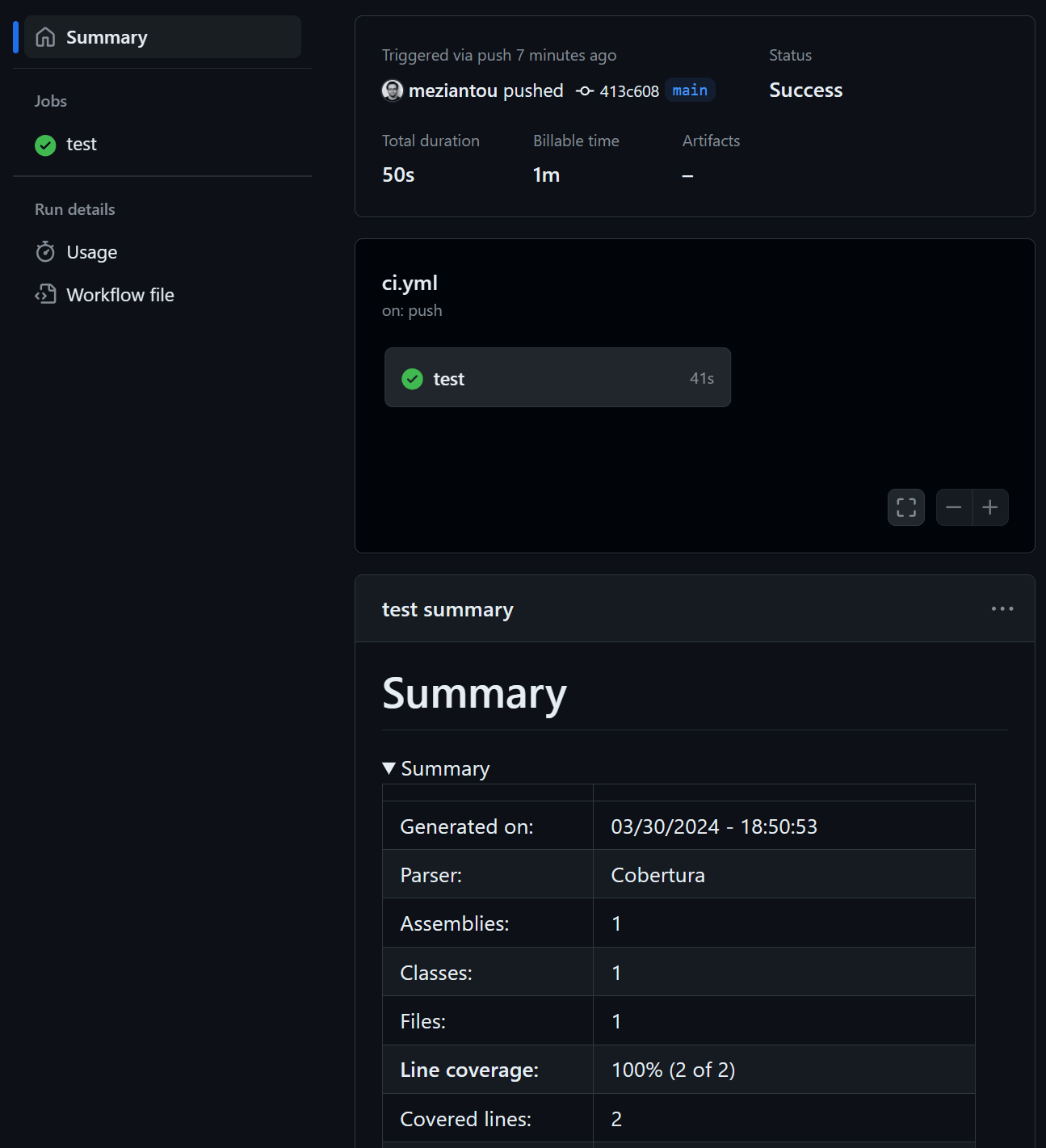In an older post, I wrote about how to compute code coverage for a .NET Core project with Coverlet. In this post, I'll show you how to get code coverage without any additional dependency. Indeed, the .NET SDK 8 now includes all you need to compute code coverage. Microsoft also provides a .NET tool to process the coverage files.
Let's start by creating a new xUnit project and removing the dependency on coverlet.collector as we don't need it anymore:
PowerShell
dotnet new xunit
dotnet remove package coverlet.collector
You can then run the tests and compute the code coverage with the following command:
PowerShell
dotnet test --results-directory "test-results" --collect:"Code Coverage"
dotnet test --results-directory "test-results" --collect:"Code Coverage;Format=cobertura"
The --collect:"Code Coverage" argument tells the test runner to collect code coverage data. The coverage files are saved in the test-results directory. The coverage files are saved in a VS-specific format (.coverage) which is not understood by other tools. You can change the output format using "Code Coverage;Format=cobertura" or you can convert them to the Cobertura format using the dotnet tool dotnet-coverage (documentation):
PowerShell
dotnet tool update --global dotnet-coverage
The coverage reports are stored in folders that are named using random GUID. Such folders are hard to find and merge. Hopefully dotnet-coverage support globbing:
PowerShell
dotnet-coverage merge --output test-result.cobertura.xml --output-format cobertura "test-results/**/*.coverage"
Then, you can do whatever you want with the Cobertura file. For example, you can publish it as an artifact in Azure DevOps or generate a nice HTML report with ReportGenerator:
PowerShell
dotnet tool install --global dotnet-reportgenerator-globaltool
reportgenerator -reports:test-result.cobertura.xml -targetdir:coverage-report -reporttypes:"Html_Dark"
If you use GitHub Actions, you can also publish the coverage summary as a Job Summary, so the coverage is easily accessible from the run:
YAML
on:
push:
jobs:
test:
runs-on: ubuntu-latest
steps:
- uses: actions/checkout@v4
- run: dotnet test --results-directory "test-results" --collect:"Code Coverage"
- run: dotnet tool update --global dotnet-coverage
- run: dotnet-coverage merge --output test-result.cobertura.xml --output-format cobertura "test-results/**/*.coverage"
- run: dotnet tool install --global dotnet-reportgenerator-globaltool
- run: reportgenerator -reports:test-result.cobertura.xml -targetdir:coverage-report -reporttypes:"MarkdownSummaryGithub"
- run: cat coverage-report/SummaryGithub.md >> $GITHUB_STEP_SUMMARY
 Code coverage displayed as a job summary in GitHub Actions
Code coverage displayed as a job summary in GitHub Actions
Do you have a question or a suggestion about this post? Contact me!